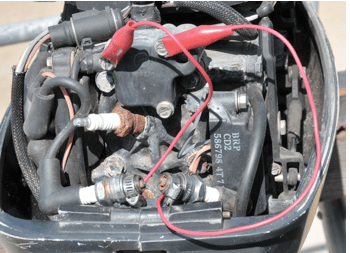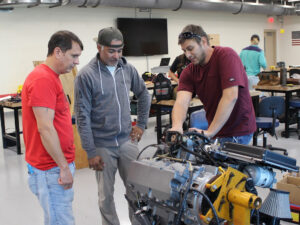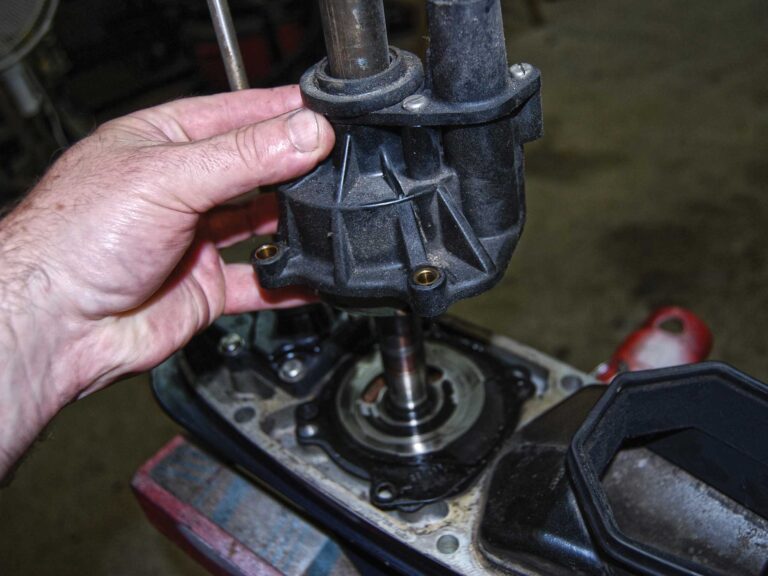
Spark Tester
Purchasing specialized testing equipment to fix your own outboard motor is expensive. Often a DIY mechanic can fabricate his own special tools making troubleshooting a lot easier on the budget. Especially on older outboard motors, checking the ignition system for spark is a common procedure when the engine will not start or if it runs poorly. With this easy to make tester, observing the spark output on an engine will not require a costly special tool.
The parts needed for this are common items that most boaters may already have in their garage. The tester consists of a sparkplug, a small hose clamp, and a piece of wire with an alligator clip on one end. Assemble one for each cylinder on your outboard. That’s it — nothing expensive, exotic, or hard to obtain.
Any regular spark plug will work after you remove the ground electrode from the shell. Just grip the ground piece with a pair of pliers and bend it back and forth until metal fatigue snaps it off. A small hose clamp fastens the bare wire to the spark plug shell thus saving you from trying to solder the pieces together.
WHAT YOUR SPARKPLUGS ARE TELLING YOU
For safety around moving parts, flammable gasoline, and high voltages, common sense and caution are required as well as knowledge of your own abilities. Follow all the safety recommendations, procedures, and caution information listed in the factory service manual.
CAUTION: DO NOT remove the sparkplugs and crank the motor over while testing for spark output. Any accumulated gasoline inside the engine could spray out of the spark plug holes and be ignited by the spark tester. Keep the spark plugs installed during ignition testing as is not only an important safety issue but it duplicates the conditions and cranking-speed that the engine encounters while attempting to start.
This spark-ignition tester is only for traditional outboards with either point ignition or CDI systems. Modern computer-controlled low-emission motors such as EFI and DFI styles may require special testing procedures. Because the high voltage spark generates radio frequency interference around it, the resulting RFI can affect the operation of onboard engine computers. Again, the factory service manual should be your guide. Inboard and stern-drive engines are in enclosed compartments that may possibly contain gasoline fumes. This tester should only be utilized on outboard motors in well ventilated areas.
FIVE IMPORTANT DIAGNOSTIC CHECKS
To use, connect a spark plug wire onto the end of the plug and fasten the alligator clip to a bolt or to bare metal for a good ground connection. Leaving the original spark plugs in place and while remaining clear of moving parts, have someone crank the engine over. Observe if there is steady spark jumping from the center electrode to the outer metal shell.
The tester forces the ignition system to generate enough voltage to arc across the open gap indicating sufficient energy for a motor to at least “fire up.” Using a tester per plug wire quickly determines if one or more cylinders are not “firing” if your motor will not start or exhibits a lack of power. Being inexpensive, rugged, and compact this home-brew tester should be included in every onboard toolbox.









